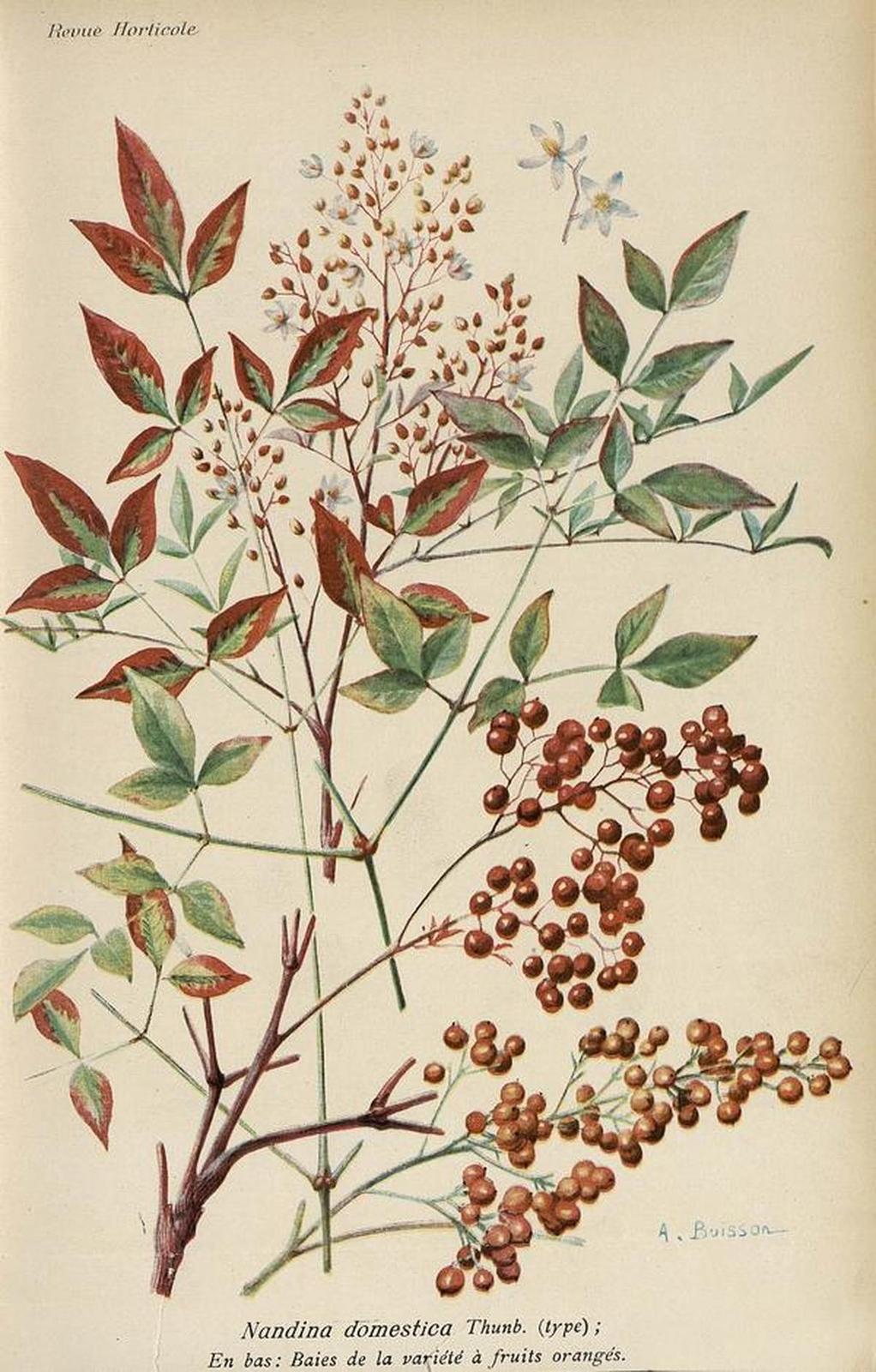Nandina domestica Thunb.
BerberidaceaeCultivada en los jardines chinos y japoneses durante siglos, se incorporó a la jardinería europea en 1804 gracias a William Kerr, quién la envió a Londres desde Cantón, también conocida como Guǎngzhōu. Nombrada científicamente a partir de la latinización de su denominación en japonés, nan-ten, su nombre popular, bambú sagrado, hace referencia al follaje de estas plantas, si bien la nandina presenta una escala mucho más menuda. Esta cualidad le otorga gran valor para su uso en los jardines, pero sobre todo su original comportamiento cromático: y es que sus hojas cambian de color según la estación del año. Así, en primavera las hojas gozan de un color rojo anaranjado que se va aclarando con la llegada del calor y va adquiriendo un toque verdoso. En otoño, las hojas son rosadas y van alcanzando un rojo brillante hasta alcanzar su máxima intensidad en invierno para terminar volviéndose púrpuras y rojas antes de su caída. Coincidiendo su colorido rojo con el invierno, es por ello que, como la Flor de Pascua, la nandina es usada en Navidad como decoración de los altares de las casas y templos en ciudades como Sanghai.
Procedencia
Oriental/AsiáticoCalendario
Hábitat
Morfología
 Planta
Planta
 Esférica
Esférica
 Pinnada
Pinnada
 Ovada
Ovada
 Lanceolada
Lanceolada
 Alterna
Alterna
 Entero
Entero
 Atenuada
Atenuada
 Cuneada
Cuneada
 Agudo
Agudo
 Perenne
Perenne
